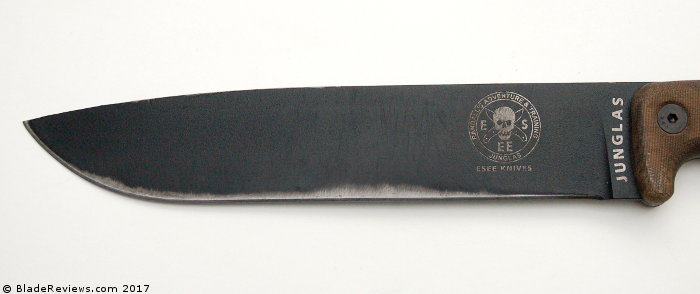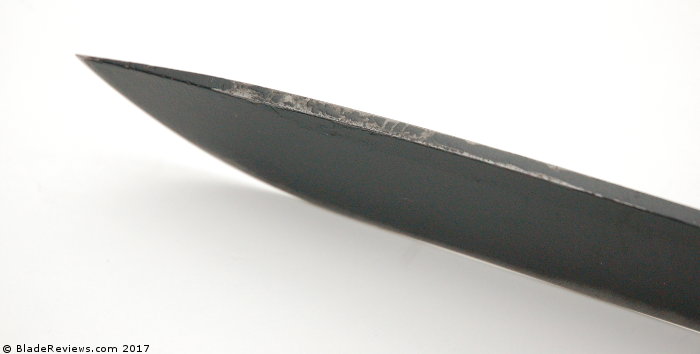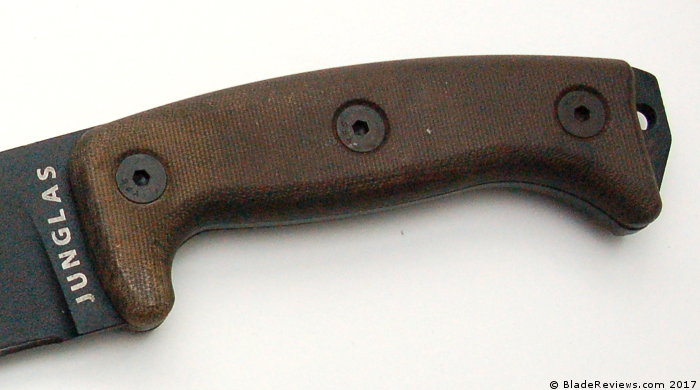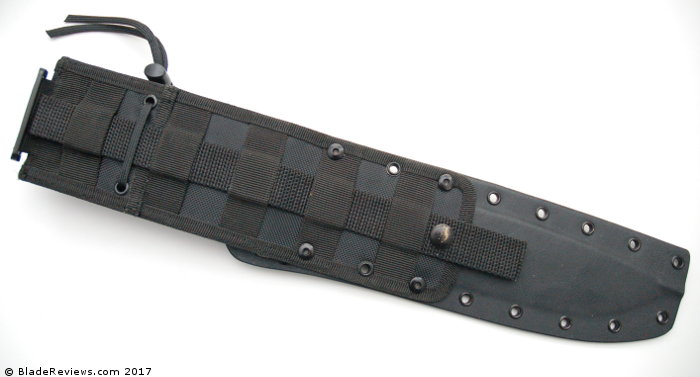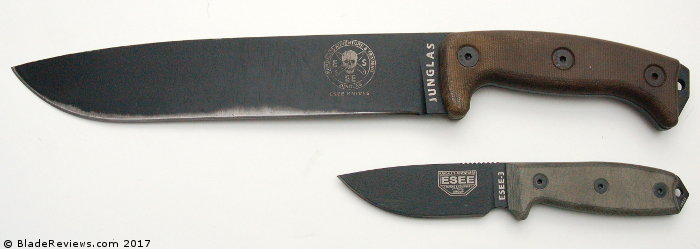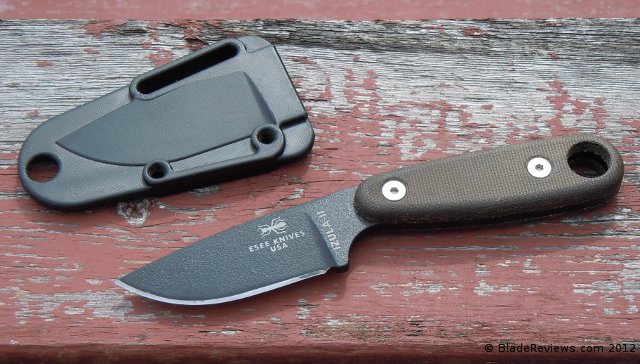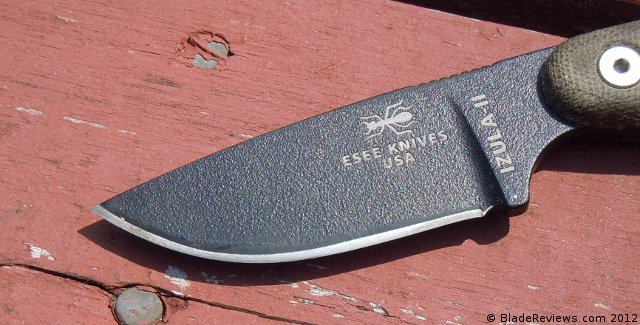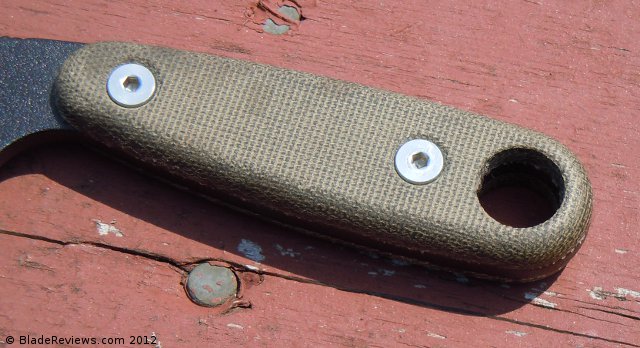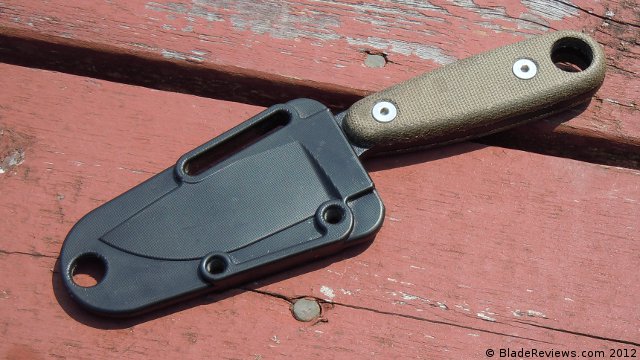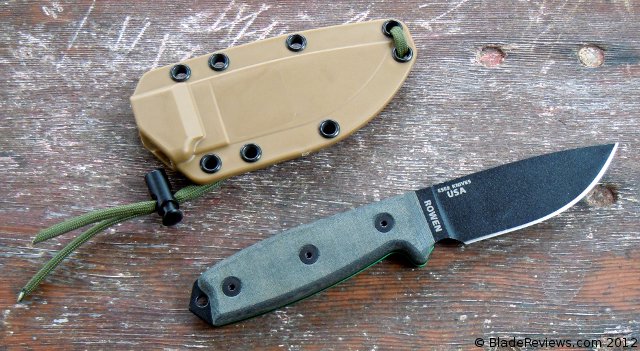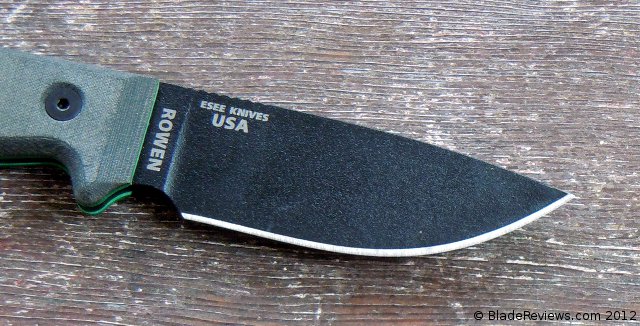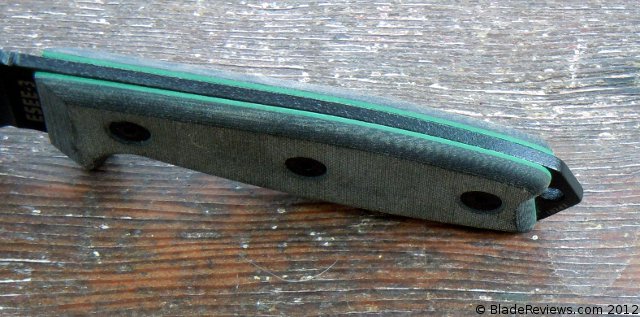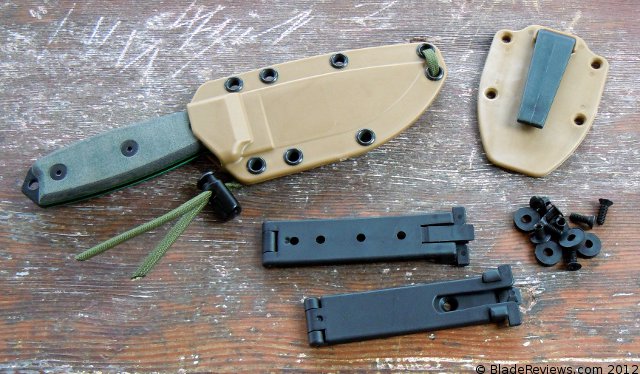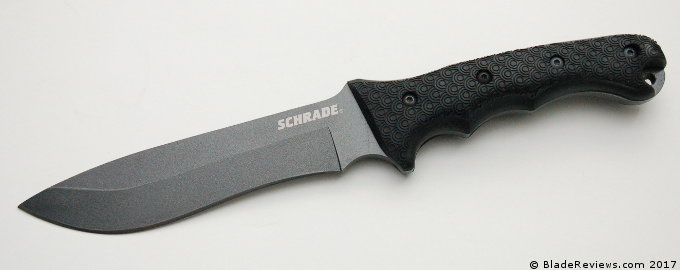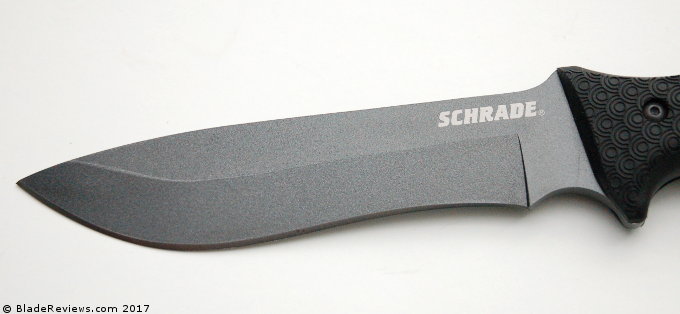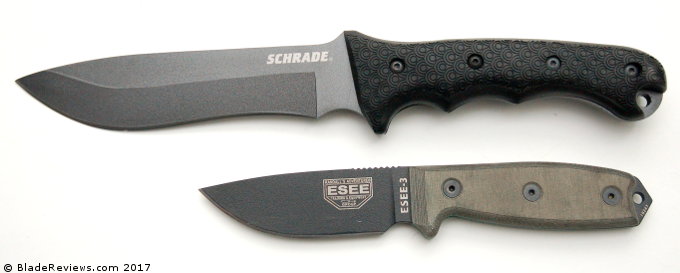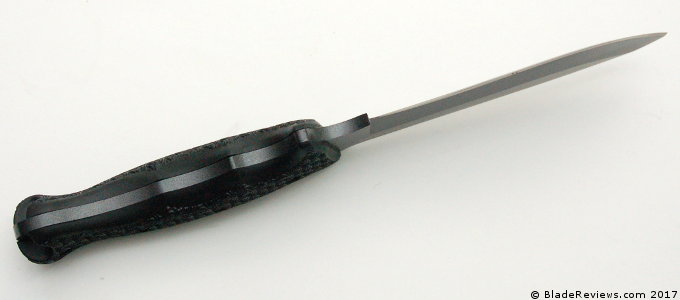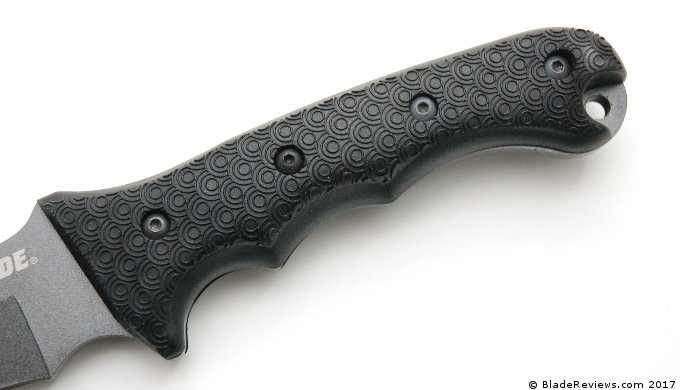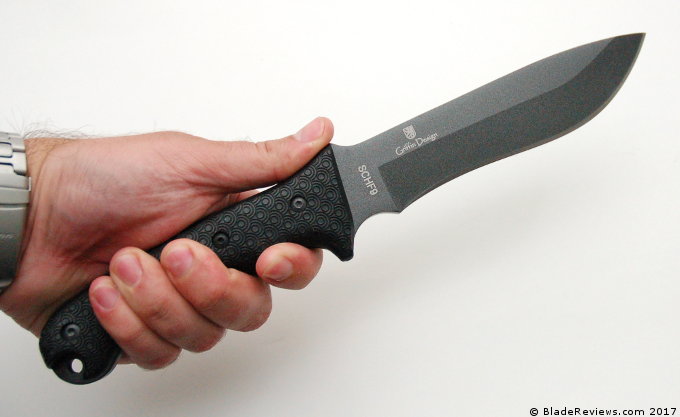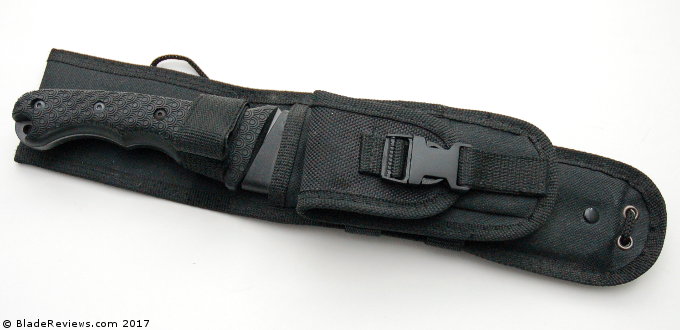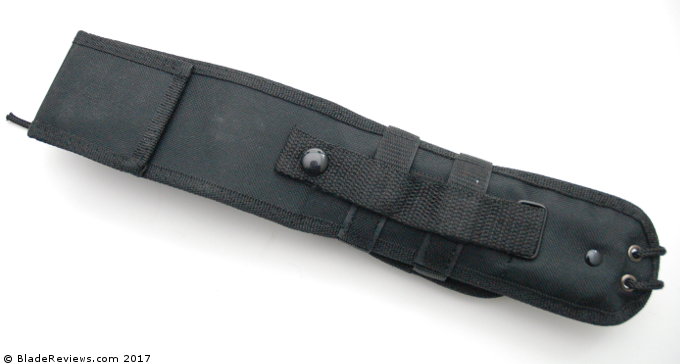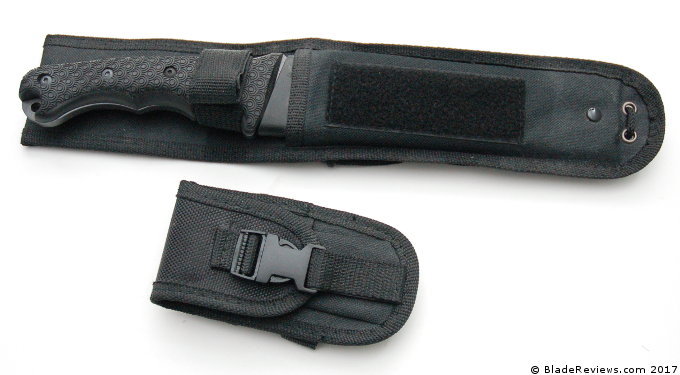Last Updated: July 21, 2021
Unlike a tattoo, a blog post is easy to edit. Easy to update. And that’s a great thing because I originally penned this review of the ESEE Junglas back in May of 2011. Currently it’s 2021. I’ve owned the knife for over 10 years now. That’s hard to believe. Time to update the review.
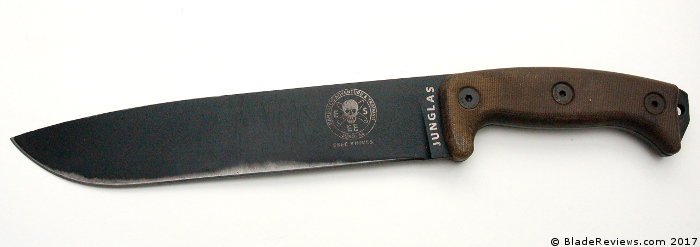
Buy the Junglas at BladeHQ
Buy on Amazon
Spoiler alert: Not much has changed. I loved the Junglas in 2011, and in 2018 I still love the knife. Only now I’ve beaten the hell out of mine for half a decade, so I can comment on all the experience I have with the Junglas. I’ve also added some new photography of the knife in it’s present condition. The handle has darkened with sweat and grime, and the coating of the blade shows considerable wear, but in my opinion this just adds character to a bad ass knife.
The Junglas remains my favorite big chopper. It’s the knife I reach for after a hurricane. Heck, it’s the knife I reach for as I get ready for a hurricane, as well as a knife I have used to break down countless branches, baton open logs for camp fires, and relieve a hell of a lot of stress.
General Dimensions and Blade Details
The ESEE Junglas has an overall length of 16.5″, a 10.5″ blade, and it weighs 22.5 ounces on its own, 33 ounces with the sheath. It’s a big knife. I can’t say I’ve brought it on any ultra light hiking trips. It mostly lives in my garage. But that size and weight make it a tremendous chopper, and it’s a very satisfying tool to heft and use. Although it shares some lines with a machete, it’s much stouter. Shorter and thicker stock. It’s more like a short sword. I like the dimensions and wouldn’t change a thing. If you need something smaller ESEE knives has an entire range of products for your consideration. This one is their big gun.
The blade is a long drop point made of a 3/16″ thick piece of 1095 high carbon steel. It does two things well: chopping and batoning. I have chopped a ton of tree limbs with this knife. My chopping technique isn’t the best, but if I’m concentrating I can get through a fresh 2″ thick limb in 3 swipes.
The knife comes with almost a full flat grind, so it’s not the most amazing knife to baton with (I prefer the Fallkniven A1), but what it lacks in geometry it makes up for with size. You can span large logs with this knife and beat the Junglas through pretty much anything. Mine has held up famously, although the powder coating is worse for the wear. I am glad it has worn down a bit, as it means less resistance when I am chopping.
The Junglas comes in 1095 high carbon steel. I am a big fan of 1095 for a big chopper like this. 1095 is tough, so it doesn’t chip easily, and it is easy to sharpen. It’s an excellent steel for chopping wood. Of course, being a high carbon steel it is more susceptible to rust than a stainless steel. ESEE mitigated this somewhat by applying a black powder coat. This coating wears well when compared to a cheaper teflon coating, but it will still wear. Regardless, the coating will help protect most of the knife from rusting. That said, you are going to want to keep this knife dry and oiled. I try to hose my knife down with WD-40 after every session. I have not had any major issues with rust following this protocol.
Handle and Ergonomics
The handle of the Junglas is simple, but it’s done right. The scales are 2 large slabs of canvas micarta, which provide good grip and durability. This knife is nicely finished. The edges of the handles are radiused (smoothed), and they line up flush with the tang. The micarta is held in place with 3 large allen bolts, so you can take this knife apart if need be. Extra steel protrudes from the pommel, and you can use that to crack nuts or the skull of a zombie invader.
The ergonomics of the Junglas are excellent. This is a knife I have chopped for hours and hours with. I’ve never had a problem with hot spots or discomfort. The handle fills the hand well, and the shape of the handle helps to hold your hand in place. The combination of the smart design and high traction micarta keeps the Junglas in your hand, even if you are a sweaty bastard like me, and near delerium from an afternoon of chopping in the 95 degree Florida heat. The ergonomics are outstanding and I can’t overemphasize that. It’s critically important for a big chopper like this, and the Junglas nails it.
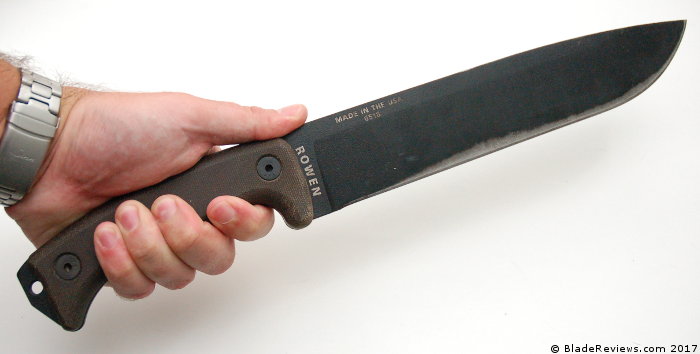
Sheath
The sheath is often the weakest link from a production fixed blade. Most manufacturers spend their money on the knife itself, and the sheath sometimes feels like an afterthought. Thankfully this is a non-issue here because ESEE made a sheath as good as the knife, if not better.
The sheath is made of a combination of kydex and cordura. The kydex portion runs the length of the blade up past the hilt. The cordura portion is the fabric part that attaches to your belt and is removable with 4 fasteners.
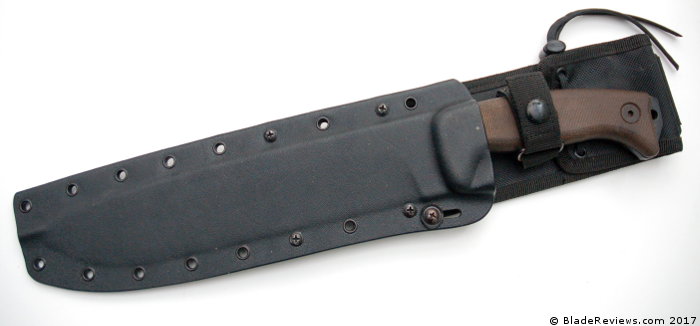
My favorite part of the sheath is the sound it makes. The knife slams into the sheath with a loud “crack” that reminds me of a 12 gauge racking a round. It’s a sound that means business. Maybe it’s the 12 year old boy in me or something, but it find it immensely satisfying. If you don’t care for the sound, you can adjust the retention so it’s a little quieter.
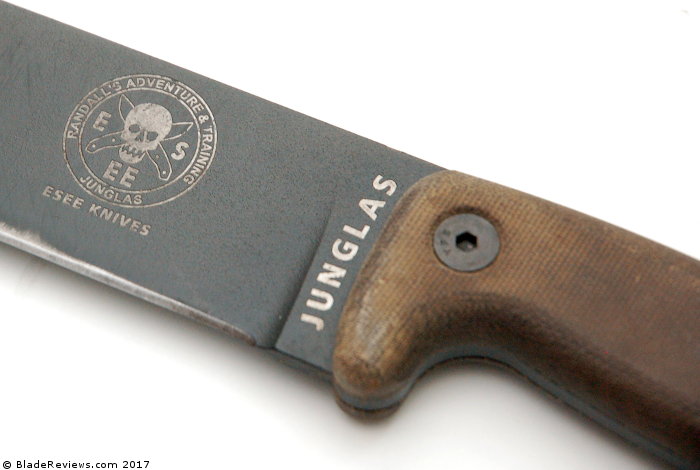
Regardless, once locked in place this knife isn’t going anywhere. The secondary retention strap is there for a little extra security, and if you were going to jump out of an airplane with this knife, there is a way to physically lash the blade into the sheath. My friends, blade retention is not an issue.
And the sheath comes with all the bits and bobs you would expect here. There is a water drain, tons of eyelets for running paracord, and it’s MOLLE capable. And everything is built to the highest standards. My sheath shows very little wear. I appreciate how the secondary retention strap falls away, so you don’t cut into it while drawing out the knife. I’ve inadvertently sawn through the retention straps of other sheathes before. You don’t have that problem with this sheath. In fact, you don’t have any problems with this sheath.
In conclusion, this sheath rocks. ESEE thought of it all and you have a sheath that wears just as well as the knife.
As a parting size comparison shot, here is a shot of the Junglas next to an ESEE-3:
ESEE Junglas Review – Final Thoughts
There is a reason I keep coming back to this knife. The Junglas is a beast of a knife. My collection has ebbed and flowed over the years, but the Junglas remains a constant piece of gear. At around $175 this is not a cheap knife, but when you consider what a quality folding knife goes for this is an easy one for me to justify. If I lost it today I’d buy another one tomorrow. No questions asked.
And I think you get what you pay for. Nothing else comes close. The Becker BK-9 is about $100 less and is a great tool for the money, but the Junglas is the knife I continue to reach for. After owning this blade for over 5 years this is the highest endorsement I an offer.
Even if you are just a mild-mannered suburban guy like me, if you do your own yard work or enjoy the occasional campfire you will get a thrill out of owning and using this excellent knife.
- ESEE Tactical Suvival Knives.
- Kydex Sheath w/ Cordura Backing.
- Steel: 1095 Carbon, 55-57 Rc. Finish: Black Powder Coat.
- Hammer Pommel w/ Lanyard Hole. Flat Grind.
- For Full Specifications, Features, Survival Kit Contents, Care, and Warranty Info Please See Description Below.
I recommend purchasing the Junglas at BladeHQ or Amazon. Purchasing anything through any of the links on this site helps support BladeReviews, and keeps this review train running. As always, any and all support is greatly appreciated Thank you very much.
